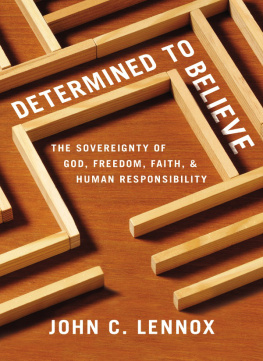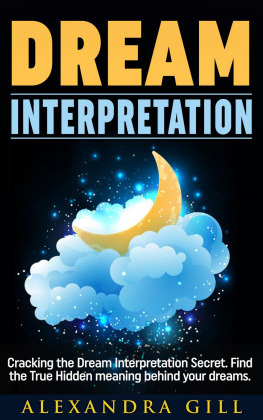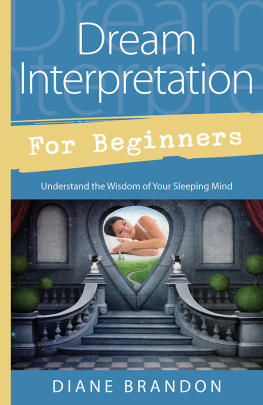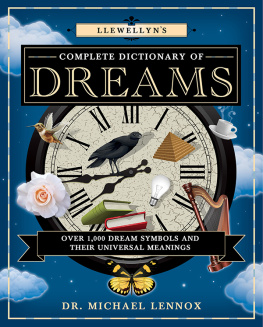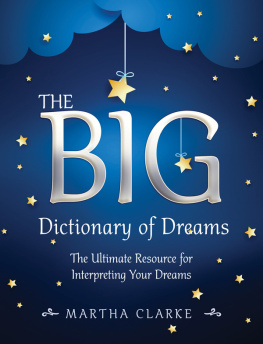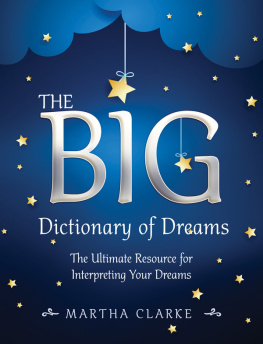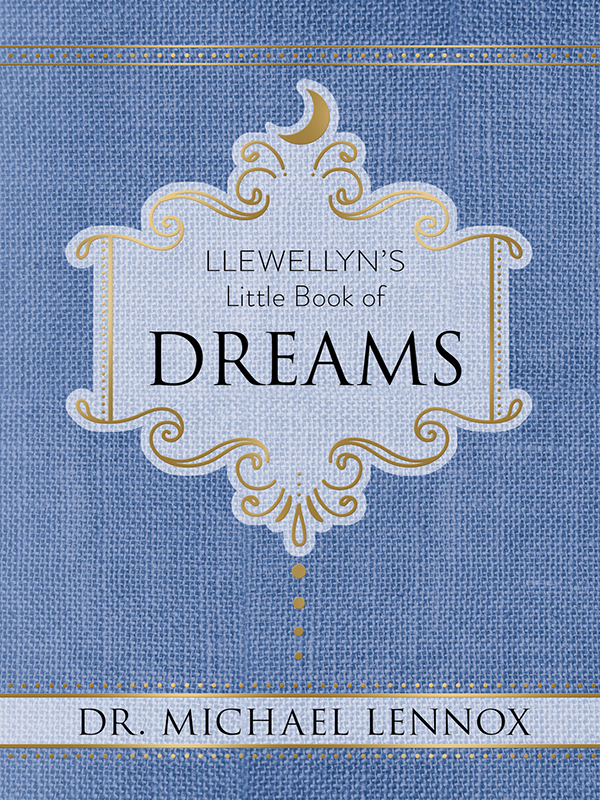
David LaPorte
D r. Michael Lennox (Los Angeles, CA) is a practicing psychologist and one of the most respected and sought-after dream interpreters in the US. He has appeared on SyFy, MTV, and many radio shows, and has published articles in Todays Woman , TV Guide , and other magazines. His previous books include Dream Sight: A Dictionary and Guide for Interpreting Any Dream and Llewellyns Complete Dictionary of Dreams . Visit him at www.michaellennox.com.

Llewellyn Publications
Woodbury, Minnesota
Copyright Information
Llewellyns Little Book of Dreams 2017 by Dr. Michael Lennox.
All rights reserved. No part of this book may be used or reproduced in any matter whatsoever, including Internet usage, without written permission from Llewellyn Publications, except in the form of brief quotations embodied in critical articles and reviews.
As the purchaser of this e-book, you are granted the non-exclusive, non-transferable right to access and read the text of this e-book on screen. The text may not be otherwise reproduced, transmitted, downloaded, or recorded on any other storage device in any form or by any means.
Any unauthorized usage of the text without express written permission of the publisher is a violation of the authors copyright and is illegal and punishable by law.
First e-book edition 2017
E-book ISBN: 9780738753737
Based on book design by Rebecca Zins
Cover cartouche by Freepik
Cover design by Lisa Novak
Llewellyns Complete Dictionary of Dreams by Dr. Michael Lennox 2015
Llewellyn Worldwide Ltd., 2143 Wooddale Drive, Woodbury, MN 55125.
All rights reserved, used by permission.
Llewellyn Publications is an imprint of Llewellyn Worldwide Ltd.
Library of Congress Cataloging-in-Publication Data is pending.
ISBN 978-0-7387-5207-5
Llewellyn Publications does not participate in, endorse, or have any authority or responsibility concerning private business arrangements between our authors and the public.
Any Internet references contained in this work are current at publication time, but the publisher cannot guarantee that a specific reference will continue or be maintained. Please refer to the publishers website for links to current author websites.
Llewellyn Publications
Llewellyn Worldwide Ltd.
2143 Wooddale Drive
Woodbury, MN 55125
www.llewellyn.com
Manufactured in the United States of America
Contents

1: THE WORLD OF DREAMS:
A BRIEF OVERVIEW
2:
3: WORKING WITH
YOUR DREAMS
4:

Exercises
1:
2:
3:
4:
5:
6:
7:
8:


Introduction

M y very first childhood memories are dreams. For me, those images are as powerful as waking-life events that occurred during the same time period, if not more so. The most potent one came when I was just three years old. I dreamed of being in this vast space where I was aware of things above me being unfathomably huge and things below me being inconceivably smalla dream I later recognized as symbolically representing the concept of infinity.
The dream was terrifying to me such that I remember it to this day. Years later, I heard this exact same imagery described by someone else, and I felt a sense of coming full circle. From the time I could perceive my own identity, I was connecting through my dreams with the collective unconscious. Though it would be decades before I even knew what that was, dreams would indeed connect me to myself, to others, and to the world around me as a lifelong passion.
It was as a teenager that I discovered my gifts as a dream interpreter. While at summer camp and later in high school, I noticed that my friends and peers were constantly sharing their dreams with each other. It was not uncommon for a conversation to begin with the frequently expressed notion that I had the craziest dream last night! We wereas I would later find that most people arevery motivated to share our dreams with each other in social settings. I inserted myself into the mix as someone who could discern the meaning behind these mysterious nighttime phenomena. But to see why I even opened my mouth, we have to go back a few years to my early childhood.
There was always music playing in my home on the weekends. My mother was fond of playing her records (for the under-thirty crowd, those are really big, black CDs), which exposed me to classical music, folk singers, and a smattering of Broadway show scores, one of which was Fiddler on the Roof . In Fiddler , there is this wonderful sequence in which Tevye tells his wife about a dream he had, and she offers to interpret it. This act of her telling him what his dream means is crucial to the unfolding of the plot. Having heard this recording countless times, I cant express how strongly that idea was imprinted on my brain. The impact of Tevyes dream, and more importantly, Goldes interpretation of it, is a lynchpin on which an important piece of the narrative of the play hinges. Though it was innocuous at the time, listening to this over and over as a child was to be one of the most important experiences of my life.
When I was fifteen, my mother was working toward a masters degree in social work. I had always been captivated by the books on her shelf. One day I spotted Freuds Interpretation of Dreams . I pored over it ravenously. As precocious as I was, I dont imagine that I understood any of the material at such a young age, but I definitely gained one very important piece of information from those pages: a dream is something that comes from the inside of a persons mind, and by interpreting it, one can gain some information of value.
So when my teenage friends began to mention their dreams when we were out and about, I found myself unable to stifle the impulse to ask to hear about them and offer something in response. I cant quite imagine what presumptuousness prompted me to make such an outlandish offer, but not being one to hold back my opinions, I did just that. As a result, an amazing thing began to happen. I would listen to the dream and my imagination would ignite. I would then offer some thoughts about what the dream might mean from this imaginative place.
At the time, I had absolutely no idea what I was doing, but from the very start, people responded with curiosity and, more alarmingly, satisfaction. I clearly had a gift and thus began doing this over and over again until, by the time I was in my mid- to late twenties, I had interpreted hundreds of dreams for people. It was not unusual for my phone to ring and the caller to say, My friend so-and-so tells me that you can tell me what my dream means! I was hooked.



